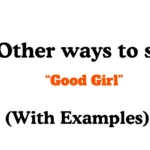Finding the right words to ask how someone is doing can make a real difference in how connected and cared-for they feel. Instead of the usual “How is it going?,” you can use thoughtful alternatives that sound warmer, friendlier, and more personal. These other ways to say “How is it going” help you start meaningful conversations—whether you’re talking to friends, coworkers, or someone new. Let’s explore 30 creative, empathetic, and human-centered alternatives to express genuine care and interest.
What Does “How Is It Going?” Mean?
The phrase “How is it going?” is a casual and friendly way to ask about someone’s well-being, mood, or how their day is progressing. It’s often used in everyday conversations to check in or show interest in someone’s life, whether personally or professionally.
Is It Professional or Polite to Say “How Is It Going?”
Yes, “How is it going?” is generally considered polite and informal. It fits perfectly in friendly work environments or casual conversations. However, in formal or business settings, you might choose alternatives like “How are things progressing?” or “How have you been?” for a more professional tone.
Pros or Cons of Saying “How Is It Going?”
Pros:
- Simple, friendly, and easy to use
- Works in most social situations
- Creates a warm, conversational tone
Cons:
- Can sound generic if overused
- May seem too casual in formal contexts
- Doesn’t always invite deep conversation
Synonyms For “How Is It Going?”
- How have you been?
- How are things?
- How’s life treating you?
- What’s new with you?
- How’s everything going?
- How are you holding up?
- How’s your day been?
- What have you been up to?
- How’s everything on your end?
- How are things with you lately?
- What’s going on?
- How’s your week going?
- Everything okay?
- How’s your world today?
- How’s everything been lately?
- How are things going for you?
- How’s everything coming along?
- How’s your morning (or evening) going?
- What’s happening?
- What’s up?
- How’s it been going?
- How’s life these days?
- How’s your week been so far?
- How are things coming together?
- What’s been going on lately?
- How’s your side of things?
- How are you feeling today?
- How’s life treating you lately?
- How’s the day shaping up?
- How’s everything in your world?
1. How have you been?
Scenario: When reconnecting with someone after a while.
Examples:
- How have you been these days?
- I was just thinking about you—how have you been?
- It’s been so long! How have you been holding up?
Tone: Warm and caring.
Explanation: Shows genuine interest in someone’s recent life and feelings.
2. How are things?
Scenario: When talking casually to a friend or colleague.
Examples:
- Hey, how are things at your end?
- How are things going with your new job?
- How are things these days?
Tone: Relaxed and friendly.
Explanation: A general, lighthearted way to start a conversation.
3. How’s life treating you?
Scenario: When you want to show empathy and curiosity about someone’s well-being.
Examples:
- How’s life treating you lately?
- How’s life treating you after the big change?
- I hope life’s been kind to you.
Tone: Empathetic and kind.
Explanation: Reflects concern and emotional connection.
4. What’s new with you?
Scenario: Perfect for catching up or small talk.
Examples:
- What’s new with you these days?
- So, what’s new with you at work?
- Anything exciting happening in your world?
Tone: Curious and upbeat.
Explanation: Encourages people to share updates or good news.
5. How’s everything going?
Scenario: Use in casual chats or quick check-ins.
Examples:
- How’s everything going with your studies?
- How’s everything going at home?
- How’s everything going today?
Tone: Supportive and conversational.
Explanation: Feels natural and shows general care.
6. How are you holding up?
Scenario: When someone might be facing challenges.
Examples:
- How are you holding up after the move?
- How are you holding up with all the changes?
- Just checking in—how are you holding up?
Tone: Compassionate.
Explanation: Conveys concern during tough times.
7. How’s your day been?
Scenario: When checking in during or after a day’s activities.
Examples:
- How’s your day been so far?
- Long day? How’s your day been?
- How’s your day been treating you?
Tone: Friendly and caring.
Explanation: Focuses on someone’s recent experiences.
8. What have you been up to?
Scenario: When reconnecting with someone casually.
Examples:
- What have you been up to lately?
- So, what have you been up to since we last talked?
- What have you been up to this weekend?
Tone: Curious and open.
Explanation: Invites sharing about life or activities.
9. How’s everything on your end?
Scenario: Suitable for friendly professional conversations.
Examples:
- How’s everything on your end of the project?
- How’s everything on your end this week?
- Just checking—how’s everything on your side?
Tone: Professional yet kind.
Explanation: Balances warmth with business-like politeness.
10. How are things with you lately?
Scenario: When you want to sound genuinely interested.
Examples:
- How are things with you lately?
- How are things with you and your family?
- How are things going in your world?
Tone: Warm and thoughtful.
Explanation: Encourages real conversation and connection.
11. What’s going on?
Scenario: Informal chats or check-ins with friends.
Examples:
- Hey, what’s going on?
- What’s going on with your plans for the weekend?
- What’s going on in your life these days?
Tone: Casual and energetic.
Explanation: Invites open and easy conversation.
12. How’s your week going?
Scenario: Perfect for mid-week check-ins.
Examples:
- How’s your week going so far?
- Busy week? How’s your week going?
- How’s your week treating you?
Tone: Friendly.
Explanation: Helps maintain regular connection.
13. Everything okay?
Scenario: When you sense something might be wrong.
Examples:
- You seem quiet—everything okay?
- Everything okay at work?
- Everything okay with your family?
Tone: Gentle and caring.
Explanation: Shows empathy and readiness to listen.
14. How’s your world today?
Scenario: Light and creative way to greet someone.
Examples:
- How’s your world today?
- How’s your world treating you this morning?
- How’s your world looking these days?
Tone: Playful and positive.
Explanation: Adds personality and warmth to your greeting.
15. How’s everything been lately?
Scenario: When reconnecting after some time apart.
Examples:
- How’s everything been lately?
- How’s everything been since the last time we met?
- How’s everything been at work?
Tone: Thoughtful.
Explanation: Shows you care about recent experiences.
16. How are things going for you?
Scenario: When you want to sound supportive or interested in someone’s progress.
Examples:
- How are things going for you lately?
- How are things going for you with the new project?
- How are things going for you at home?
Tone: Caring and conversational.
Explanation: Reflects genuine curiosity about the person’s situation or progress.
Read More:30 Other Ways to Say ‘No Problem’ (With Examples)
17. How’s everything coming along?
Scenario: Great for professional or personal follow-ups.
Examples:
- How’s everything coming along with your plans?
- How’s everything coming along at work?
- How’s everything coming along since we last spoke?
Tone: Polite and engaging.
Explanation: Offers a thoughtful way to check progress without sounding pushy.
18. How’s your morning (or evening) going?
Scenario: Perfect for daily, casual check-ins.
Examples:
- Good morning! How’s your morning going?
- How’s your evening going so far?
- Hope you’re relaxing—how’s your night going?
Tone: Friendly and approachable.
Explanation: Adds time-of-day warmth to simple greetings.
19. What’s happening?
Scenario: Best used among friends or colleagues informally.
Examples:
- Hey! What’s happening?
- What’s happening at your end?
- What’s happening this weekend?
Tone: Playful and casual.
Explanation: Great for energetic, easygoing conversations.
20. What’s up?
Scenario: Very casual, often used with friends.
Examples:
- Hey, what’s up?
- Long time no see—what’s up?
- What’s up with your travel plans?
Tone: Relaxed and youthful.
Explanation: A simple, friendly opener for casual chats.
21. How’s it been going?
Scenario: Use when you’re catching up or following up.
Examples:
- How’s it been going with your studies?
- How’s it been going at your new job?
- How’s it been going overall?
Tone: Warm and conversational.
Explanation: Keeps the tone light but interested.
22. How’s life these days?
Scenario: When you want to sound reflective and kind.
Examples:
- How’s life these days?
- How’s life these days with all the changes?
- How’s life treating you lately?
Tone: Thoughtful and caring.
Explanation: Encourages deeper, more meaningful sharing.
23. How’s your week been so far?
Scenario: Great for short, friendly check-ins.
Examples:
- How’s your week been so far?
- Busy week? How’s it been going?
- How’s your week been treating you?
Tone: Warm and easygoing.
Explanation: Keeps conversations friendly and consistent.
24. How are things coming together?
Scenario: Ideal for professional discussions or supportive chats.
Examples:
- How are things coming together with your project?
- How are things coming together before the deadline?
- How are things coming together on your end?
Tone: Professional yet friendly.
Explanation: Shows interest in progress or achievements.
25. What’s been going on lately?
Scenario: When reconnecting after a gap in communication.
Examples:
- What’s been going on lately with you?
- What’s been going on since we last talked?
- What’s been going on in your world?
Tone: Curious and sincere.
Explanation: Helps open up longer, more meaningful conversations.
26. How’s your side of things?
Scenario: Great for both personal and professional contexts.
Examples:
- How’s your side of things?
- How’s your side of things at work?
- How’s your side of things this week?
Tone: Balanced and polite.
Explanation: Keeps communication friendly but not too casual.
27. How are you feeling today?
Scenario: When you truly want to check in emotionally.
Examples:
- How are you feeling today?
- How are you feeling after yesterday’s meeting?
- How are you feeling about everything?
Tone: Compassionate and sincere.
Explanation: Encourages emotional openness and honesty.
28. How’s life treating you lately?
Scenario: When you want to sound genuinely interested in someone’s happiness.
Examples:
- How’s life treating you lately?
- How’s life treating you this month?
- Hope life’s treating you well!
Tone: Empathetic and warm.
Explanation: Shows you truly care about their well-being.
29. How’s the day shaping up?
Scenario: Light and conversational—great for morning or midday chats.
Examples:
- How’s the day shaping up so far?
- How’s the day shaping up at work?
- Hope your day’s shaping up nicely!
Tone: Upbeat and friendly.
Explanation: Adds positivity to casual conversation.
30. How’s everything in your world?
Scenario: A creative and affectionate alternative.
Examples:
- How’s everything in your world?
- How’s everything in your world these days?
- How’s everything in your world going?
Tone: Playful and caring.
Explanation: Makes your greeting sound personal and warm.
Conclusion
Using different ways to say “How is it going” helps your conversations feel more natural, caring, and personal. Each phrase can show warmth, friendliness, or professionalism—depending on how you use it. A small change in your greeting can make a big difference in how people feel. So, try using these expressions to connect with others in a genuine and thoughtful way.

Emma Brooke is a passionate advocate for effective communication and language mastery. As a dedicated professional in the field of grammar and writing, Emma brings a wealth of knowledge and expertise to those seeking to improve their linguistic skills. With a focus on clarity, precision, and style, Emma Brooke is committed to helping individuals refine their language use to communicate confidently and effectively.












